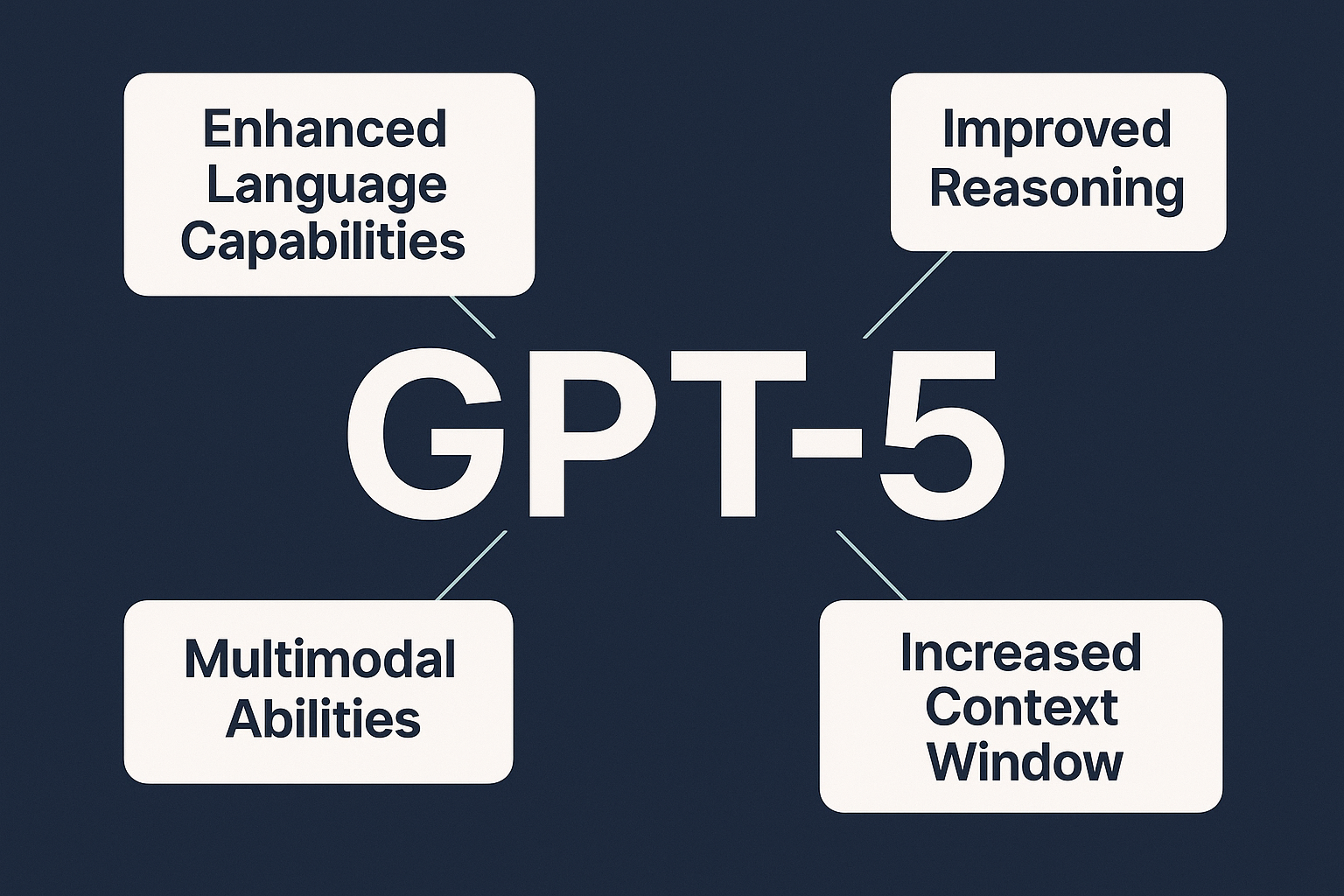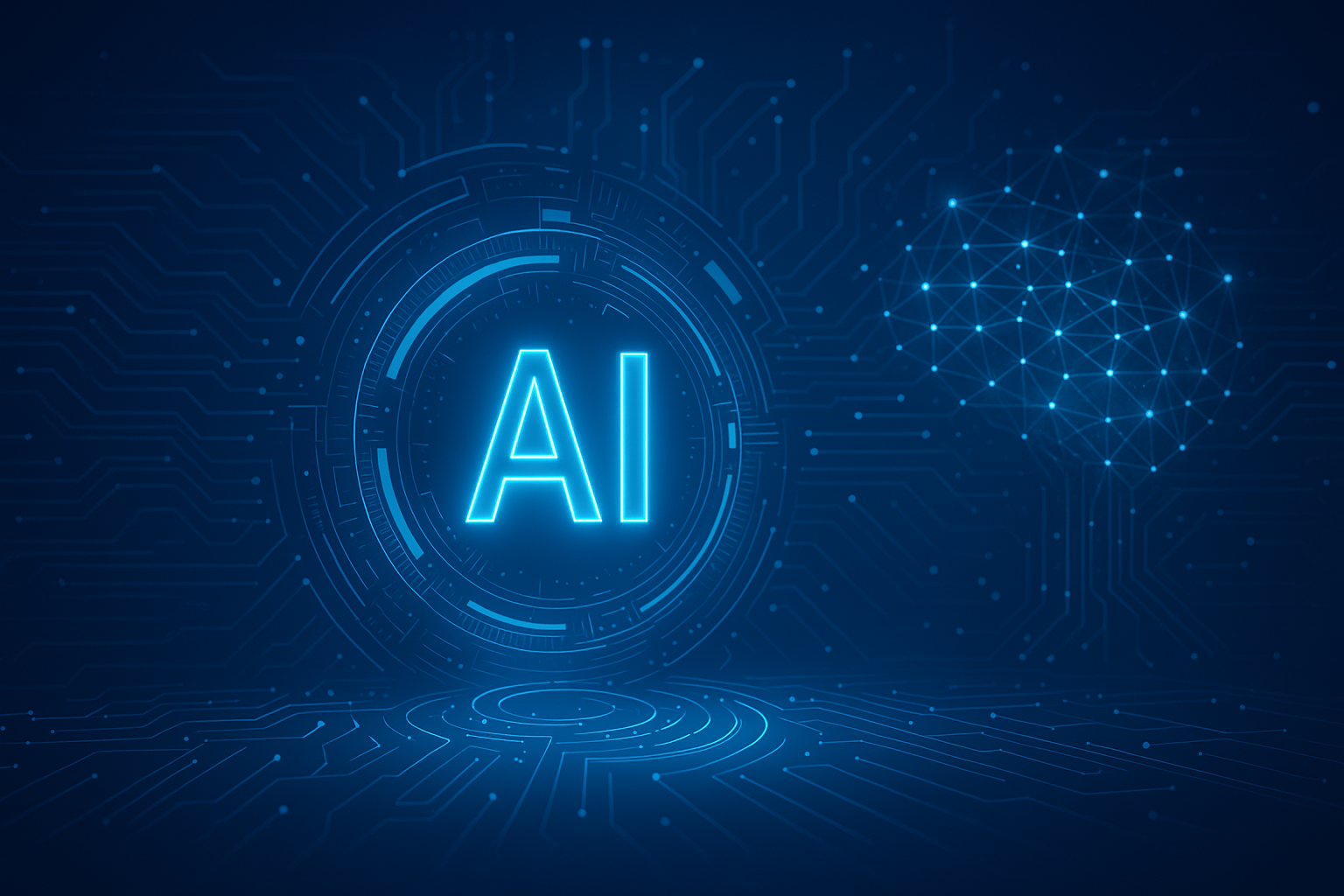OpenAI’s GPT-5 is here with memory, multimodality, and next-level reasoning. Discover how it outperforms GPT-4 and what it means for the future of AI.

Published: August 2025
Introduction
GPT-5, OpenAI’s most potent and sophisticated language model to date, has been formally released. This next-generation model is expanding the capabilities of reasoning, memory, personalization, multimodality, and other areas, building on the ground-breaking capabilities of GPT-4 and GPT-3.5.
GPT-5 will redefine what it means for machines to “understand” and “reason” like humans, if GPT-4’s fluidity astounded everyone.
What Is GPT-5?
The most recent version of OpenAI’s large language model, GPT-5 (Generative Pre-trained Transformer 5), was trained through multi-modal deep learning, reinforcement learning with human feedback (RLHF), and an enhanced architecture that facilitates real-time adaptation and persistent memory.
It powers developer integrations, productivity apps, enterprise tools, and ChatGPT and OpenAI’s API offerings.
What’s New in GPT-5?
Here are the most groundbreaking features introduced in GPT-5:
1. Long-Term Memory (Finally!)
Across chats, persistent memory is introduced by GPT-5. In order to provide genuinely customized experiences, it can now recall your name, preferences, previous interactions, and style.
For instance, GPT-5 will take note of your frequent questions about Python if you’re a developer and adjust its responses accordingly.
2. Advanced Reasoning and Logic
GPT-5 significantly improves logical problem-solving and step-by-step reasoning. In benchmarks like MATH, GPQA, and MMLU, it outperforms GPT-4-turbo with impressive accuracy.
This makes it better for:
- Coding
- Legal and tax reasoning
- Scientific calculations
- Medical diagnostics
3. Multimodal Mastery (Text + Image + Audio + Code)
Since GPT-5 is completely multimodal, it can now:
- Generate and analyze images
- Understand diagrams and charts
- Handle audio input/output
- Write and explain code visually
Upload an image, get a description. Give a chart and get a thorough analysis in return. Request code debugging, complete with images.
4. Personalized AI Assistants (via GPTs & APIs)
With GPT-5, OpenAI expands the “Custom GPTs” ecosystem. Now, developers and businesses can:
- Build branded AI agents
- Train GPTs on proprietary data
- Integrate securely into internal systems
- Deploy chatbots, virtual analysts, educational tutors, and more
5. Faster, Cheaper, Smarter (Turbo-Powered)
GPT-5 comes in “Turbo” variants with:
- Faster response times
- Lower cost per token
- Smarter context handling (up to 1 million tokens in enterprise)
This makes GPT-5 ideal for:
- Call centers
- Financial research
- Content creation at scale
- Enterprise automation

GPT-5 vs GPT-4: Key Differences
| Feature | GPT-4 | GPT-5 |
|---|---|---|
| Release Date | March 2023 | August 2025 |
| Memory | Limited (session-based) | Persistent, long-term |
| Multimodality | Basic (text + image) | Advanced (text + image + audio) |
| Personalization | Manual customization | Auto-personalized assistant |
| Reasoning Accuracy | High (80–90% in most tasks) | Very High (90%+ in expert tasks) |
| Custom GPTs | Available | Advanced ecosystem & APIs |
| Context Window | Up to 128k tokens | Up to 1M tokens (enterprise) |
| Cost | Moderate | More cost-efficient (turbo tier) |
Real-World Use Cases of GPT-5
Education:
Students who learn differently can benefit from individualized tutoring that helps them comprehend spoken questions and images.
Healthcare:
Chatbots that interact with patients and can handle voice, text, and image (scan) input to help with support or triage.
Legal & Finance:
Contracts reviewed with line-by-line explanations, document generation, and multi-source data checks.
Customer Service:
Natural, voice-enabled virtual agents with memory of past calls.
Media & Content:
News summarization, video script generation, image captioning, and audio-based editing all in one.
Is GPT-5 Safe?
OpenAI has invested heavily in safety alignment, red teaming, and fine-tuning. GPT-5 features:
- Built-in guardrails
- Custom moderation tools
- User-level control over memory
- Transparency reports and opt-outs for enterprise use
GPT-5 is also being used to research AGI safety, with Anthropic, Google DeepMind, and Microsoft as key collaborators.
What About AGI?
GPT-5 is still not “Artificial General Intelligence” (AGI), but it marks a significant step toward it.
With memory, reasoning, multimodality, and customization, GPT-5 represents a foundational model that could lead to true AGI within the decade.
How to Access GPT-5?
You can access GPT-5 via:
- ChatGPT (Pro & Enterprise Plans)
- OpenAI API (platform.openai.com)
- Microsoft Copilot (Word, Excel, Teams)
- Custom GPT apps
Free-tier users still get GPT-3.5, but GPT-5 is the new gold standard for premium experiences.
Final Thoughts
GPT-5 redefines the usefulness of AI, not merely an improvement. Memory, multimodality, and customization allow it to bridge the gap between specialized tools and adaptable helpers.
GPT-5 will, for better or worse, revolutionize human-computer interaction, change industries, and speed up the transition to artificial general intelligence in classrooms and clinics.
Disclaimer: The information presented in this article is based on publicly available sources, official announcements, and trusted industry reports as of August 2025. While every effort has been made to ensure accuracy, features of GPT-5 may evolve over time. This content is for informational and educational purposes only and does not represent any official statement from OpenAI. All product names, logos, and brands are property of their respective owners.